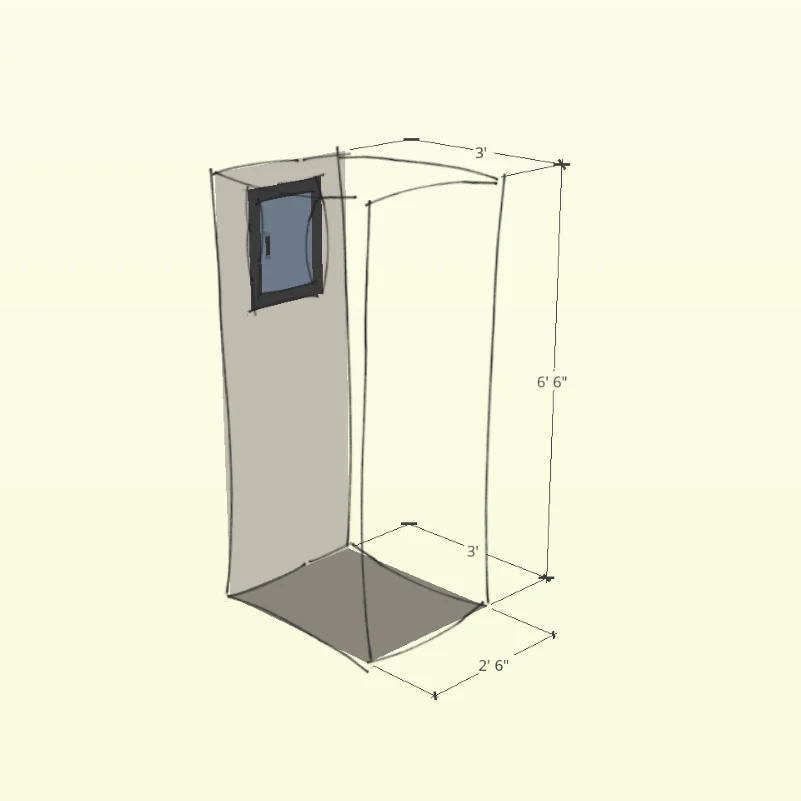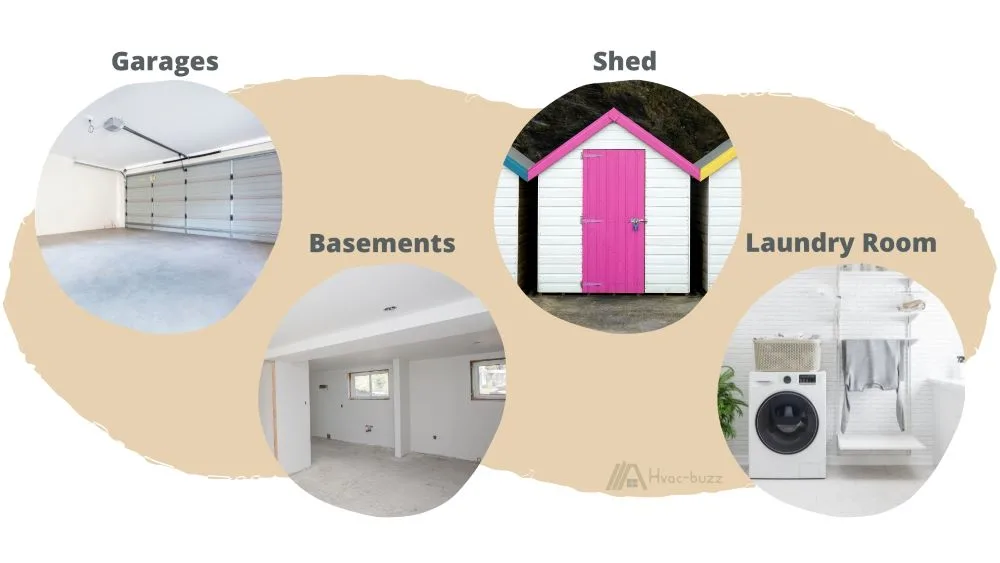A subpanel, also known as a satellite circuit breaker panel, is an electrical unit separate from the main breaker that lengthens the reach of wiring for a building. They are often placed in garages and additional workspaces, but your circumstances may make the closet seem like a good option for your subpanel. After all, it would be out of the way but still relatively easy to access.
While a closet may seem like the solution, there are actually building codes that strictly prohibit or limit installing a subpanel in a closet. I will take you through the rules as set out in the International Residential Code, so you can understand when and why subpanels in closets are not permitted.

The IRC prohibits subpanels from being installed in clothes closets. Other closets can only be used if no combustibles are stored. There must be a 36” deep, 30” wide, and 6.5 ft high working space in front of the subpanel. This can’t be used for storage. The closet must have non-automatic, artificial illumination.
IRC Prohibits Subpanels in Clothes Closets
As per the International Residential Code (IRC) Section E3405.1:
“Panelboards, service equipment and similar enclosures shall not be located in bathrooms, toilet rooms, clothes closets or over the steps of a stairway.”
The IRC provides rules on residential building safety for all fifty US states, Trinidad, Tobago, the Cayman Islands, and several other nations around the world. It is more than likely that their codes apply to you.
Reasons for This Prohibition
Fire Safety
Since the main safety concern of electrical appliances is their flammability and ability to cause sparks and set fire to other items, oftentimes, the rules governing these appliances (including subpanels) are made with fire safety in mind.
Section E3405.5 of the IRC states:
“Required working space shall not be designated for storage.”
Installing a subpanel in a clothes closet is especially dangerous since cloth is a highly flammable material.
Supporting the IRC’s subpanel restrictions, Section 240.24D of the National Electric Code asserts
“Overcurrent devices shall not be located in the vicinity of easily ignitable material, such as in clothes closets.”
Thus, to install a subpanel in a clothes closet would be violating both the IRC and the NEC guidelines.
Clearances
Besides the flammable nature of the clothing in the closet, other problems arise from its dimensions.
Section E3405.2 of the IRC states that the working space of a subpanel’s enclosure must have at least 36″ of space in front of the subpanel, and at least 30″ of width, unobstructed, in front of the subpanel. Additionally, the height of the enclosure should also be at least 6.5 ft tall.

Although closets often meet the 6.5 ft requirement, the area above is often taken up by shelves and/or closet bars. The area in front of the subpanel must also be clear and at least 3 ft deep, which excludes many closets, not just those used for clothes.
The clearance requirements are quite restricting for electrical appliances like subpanels. For example, the required working space is one of the reasons against installing a subpanel in a crawl space.
Lighting
Section 3405.7 of the IRC asserts:
“Artificial illumination shall be provided for all working spaces for service equipment and panelboards installed indoors and all illumination shall not be controlled by automatic means only.”
Closets that are not walk-in often rely on natural light, so unless non-automatic lighting can be installed, this further proves that clothes closets are unacceptable enclosures for subpanels.
What About Walk-in Closets?
Walk-in Closet Pros
As far as clearance codes and lighting, most walk-in closets are well-suited for a subpanel.
Most walk-in closets are already lit with non-automatic lighting, making this part of the code a non-issue.
The depth and height requirements for walk-in closets would be easily followed as long as the bars and shelves of the closet are not within the working space.
The 30” width of the space in front of the subpanel should also be attainable, as long as items aren’t obstructing its path, which brings up an important issue: storage.
Walk-in Closet Cons
While walk-in closets may make it easy to keep the required workspace clear, you still have to consider the proximity of the subpanel to the flammable items (the clothes) as well as the IRC prohibition. There may be room for interpretation, i.e., to assume the IRC was not referring to walk-in closets, which can be classified as rooms.
However, to be safe, you should contact a licensed electrician or your local governing authorities who handle such matters to confirm with them if installing a subpanel in your walk-in closet would cause a problem.
It may be that you have to keep the clothing a certain distance away, or you have to enclose the subpanel in its own space within the walk-in.
Whatever the allowances would be (if any), you will definitely lose storage space, and in a walk-in closet, this is hardly desirable. As such, I wouldn’t recommend putting your subpanel in your walk-in clothes closet, even if you were allowed to do so.
What About Non-Clothes Closets?
Lighting and clearance rules must be upheld for subpanels in non-clothes closets.
To reiterate:
- Non-automatic lighting must be installed (natural lighting does not meet requirements)
- There must be a depth of 36” in front of the subpanel
- There must be 30” of space in front of the subpanel (width)
- The closet must be 6’ 6” tall without obstructions
Furthermore, as I mentioned previously, the NEC forbids subpanels from being installed in the vicinity of combustible items or materials, so you would have to consider carefully what you could still store in the closet with the subpanel. It might not be worth your while to lose valuable storage space.
Alternative Subpanel Locations

1. Garage
Subpanels extend the reach of wiring to separate entities of the home, such as garages and sheds.
Garages are often home to various construction projects that require power tools. Tripping circuits is a possibility, and although it is not entirely preventable, having a subpanel readily available makes resetting the circuit breakers much easier.
In the case of an electrical fire, the garage is often more separate from the home, meaning that it will take more time to reach the more occupied parts of the home. This extra time could save lives.
2. Shed
Sheds are often at more of a distance from the common home than a garage, so the ability to install a subpanel is important for both the extension of wiring and in the case of tripped circuit breakers.
Sheds, like garages, are also often used for construction projects. To restore power after a mishap with a power tool, rather than having to go all the way into the house, the subpanel is right there for your convenience.
A distanced shed with a subpanel also means less of a chance of the main house catching fire in case of an electrical fire.
3. Basement
Oftentimes the main service panel is located in the basement. Installing a subpanel next to it would involve easy wiring, as well as some other benefits.
A subpanel can relieve the main service panel of some of its workload and make overloading your electrical system less likely to occur.
The subpanel can also be designated to a specific room of the house that has a high energy demand. This can add some much-needed organization to your electrical system, as well as the ability to shut off this entire area when necessary.
4. Laundry Room
You can read about this further in my article on Can You Put a Subpanel in a Laundry Room?
It might be beneficial to you to know that a bathroom is not a viable alternative option for your subpanel.
Sources
https://www.thespruce.com/subpanel-uses-and-their-connections-1152735
https://www.thisoldhouse.com/electrical/21147431/inside-your-homes-electrical-service-panel
https://www.hawkinsserviceco.com/2017/07/11/understanding-the-advantages-of-installing-a-sub-panel/
